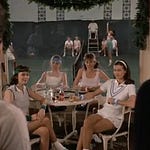– #Reminder on a European Utopia[1] / lecturing material (1999/2000) –
The European Union is the world's most successful invention for advancing peace. (EU Resolution)
At the Turn of the Millenium, Politicians as much as Economists and Scholars were sharing various ideas on briefing the European Public on the multitudinous Advantages of a European Union. Back in the day, the author labelled his approach European Econo-Politics Made Simple.
Ever since, lots of things 've changed. In the meantime, the Eurozone has been facing Right-Wing Threats[2] indoors and outdoors undermining her orgininal Primates of a Collaboration, Productivity and Peace.
Ain’t this going a bit too far?!
By various means, the European Union 's obviously turned into somewhat of a sanctuary for quite a number of less developed countries; once being granted admission and membership, tending to be pursuing doubtful national strategies of their own, quite rigidly and tenaciously.
Unlike any other country, Orbán’s Hungary[3] ‘s epitomised such creeping Apostasy from the European Union‘s historical, ie. American, British, French and German Roots[4] and her Constitutional Primates.
Il nous incombe de donner plus de chair a cette communauté et, pourquoi pas, un supplément d’âme. (Jacques Delors)
The following outline may prove a humble individual’s incentive conducive to re-inventing the European Union on her original principles set after World War II – This must never happen again!
EUROPEAN ECONO-POLITICS MADE SIMPLE
1. Business Cycles
2. The European Union
2.1. Main Purposes
2.2. Institutions
3. The European Monetary Union
3.1. Main Purposes
3.2. Policy
3.3. Institutions
3.4. The Euro
4. International Organisations
4.1. World Trade Organisation (WTO)
4.2. International Monetary Fund (IMF)
4.3. North American Free Trade Association (NAFTA)
4.4. Organisation of Petrol Exporting Countries (OPEC)
4.5. Asian and Pacific Economics Coordination Forum (APEC)
5. International Trade
5.1. Main Purposes
5.2. Modes of Trade
1. Business Cycles
The main targets of any economic policy are to safeguard:
Stable currency
Stable prices
Full employment
Economic growth
These economic indicators are to benchmark and monitor economic performance by considering the following subject matters as per detail:
Gross Domestic Product / Total economic output
Gross National Product / Total economic output including production abroad
National Budget / Accounting revenues (taxes, import duties) and expenditure (social security, education, defence, payroll costs, infrastructure, subsidies etc.)
Balance of Trade / Exports and imports of goods
Current Account / Exports and imports of goods, services and bank transfers
Inflation Rate / As per cost of living index, wholesale price index, consumer price index
Rate of Unemployment
Rate of Exchange / Euro vs. other currencies
Growth Rate
Rate of Interest / On capital savings and loans
Broad Money Supply / Circulations of coinage and bank notes
Domestic Demand
New Housing / Real Estate Business
Stock Price Index / e.g. Dow Jones
2. The European Union
2.1. Main Purposes
Eliminating customs, duties, production quota on import of goods
Establishing a common customs tariff and commercial policy in regard to non-EU countries
Establishing freedom in regard to migration of people and capital transfer
2.2. Institutions
The European Council (Heads of all EU-countries)
The European Council of Ministers (Ministers of all EU-countries)
The European Commission (‘The European Parliament’)
Developing common policies and initiating task forces
Negotiating international agreements
Monitoring compliance issues
Drafting European Budget
The European Central Bank
The European Court of Justice
3. The European Monetary Union
3.1. Main Purposes
Facilitating money transactions within European Union in regard to eliminating losses and uncertainties related to exchange fluctuations.
3.2. Policy
Austerity measures as per Maastricht agreement as per following indicators:
Budget deficit / not to exceed 3%
Public debts / not to exceed 60 % of Gross Domestic Product
Long-term interest rate / not to exceed average rate of the top (three) performing member states
3.3. Institutions
All governors of the national European central banks are represented at the European Central Bank. The European Central Bank is in charge of the following tasks and duties:
Establishing and modifying interest rates
Issuing money (coinage and bank notes)
Promoting exports by devaluing currency
3.4. The Euro
A legal tender for:
Consolidating Europe as commercial and political entity
Eliminating risk of exchange fluctuations
Establishing a competitive currency against the US-Dollar
4. International Organisations
4.1. World Trade Organisation (WTO)
Liberalising trade
Acting as an arbiter in dealing with violation of international trading rules
4.2. International Monetary Fund (IMF)
Fixing stable but practicable exchange rates
Assisting in abolishing exchange controls
4.3. North American Free Trade Association (NAFTA)
4.4. Organisation of Petrol Exporting Countries (OPEC)
Establishing fixed prices and production quota
Securing a strong market position
4.5. Asian and Pacific Economics Coordination Forum (APEC)
5. International Trade
5.1. Main Purposes
Exchange of goods and services in favour of developing the global economy.
5.2. Modes of Trade
Free Trade
Protectionism
Trade Wars
Frame of Reference
Vision Of The United States Of Europe
Europe Uniting Through The Generations
[1] European Economic Community (Wikiped) ––– European Economic Community (Wikiped) ––– European Union (Wikiped) ––– History - Consilium (europa.eu) ––– History of the EU, EU pioneers | European Union (europa.eu) ––– related as follows: Marshall Plan | Summary & Significance | Britannica ––– Schuman declaration May 1950 | European Union (europa.eu)
[2] Related as follows || The Far-Right Protest Observatory | Sciences Po Centre for European Studies and Comparative Politics ––– BELGIUM: 4,500 people march through Brussels in protest against right-wing ideology | Euronews ––– related: Radical right's rise in European governments could impact EU decisions | Euronews ––– FRANCE: Protests held across France against far-right victory in snap parliamentary elections (aa.com.tr) ––– related: French election results a win for left and center candidates - The Washington Post ––– GEORGIA: Georgia rocked by protests as government pushes Putin-style ‘foreign agent’ bill | CNN ––– GERMANY: Hundreds of thousands demonstrate against right-wing extremism in Germany | Reuters ––– HUNGARY: Hungarian Opposition Rallies At Another Mass Demonstration In Budapest (rferl.org) ––– NETHERLANDS: Demonstrations break out across Netherlands after far right's victory (lemonde.fr) ––– POLAND: Poland: hundreds of thousands march against rightwing populist government | Poland | The Guardian ––– SLOVENIA: Thousands Rally Against Slovenia's Right-Wing Government (voanews.com) ––– related as follows: List of active nationalist parties in Europe (Wikiped)
[3] Hungary's Orbán meets Putin for talks in Moscow in a rare visit by a European leader | AP News ––– Hungary’s Orban meets China’s Xi in mission to end Russia-Ukraine war | Politics News | Al Jazeera ––– related as follows: Prime Minister Viktor Orbán’s speech on the 61st anniversary of the 1956 Revolution and Freedom Fight | Embassy of Hungary Berne (gov.hu) ––– ‘Make Europe Great Again’: Hungary sets scene for its EU presidency | Hungary | The Guardian ––– Putin and Orban reaffirm Russian-Hungarian ties amid international strains | Reuters ––– The Kremlin’s growing influence in Orbán’s Hungary – POLITICO ––– Viktor Orban, Putin’s greatest European ally, makes first trip to Kyiv since start of war | CNN ––– related feature: Orbán’s (Own) Coffin: - Cal Caleido’s Caleidoscope
[4] Related features as follows: Centennials: Roosevelt FD (1933/38!) - Cal Caleido’s Caleidoscope ––– Centennials: Churchill (1940!) - Cal Caleido’s Caleidoscope ––– Centennials: De Gaulle (1947!) - Cal Caleido’s Caleidoscope ––– Centennials: Adenauer (1949!) - Cal Caleido’s Caleidoscope













Share this post